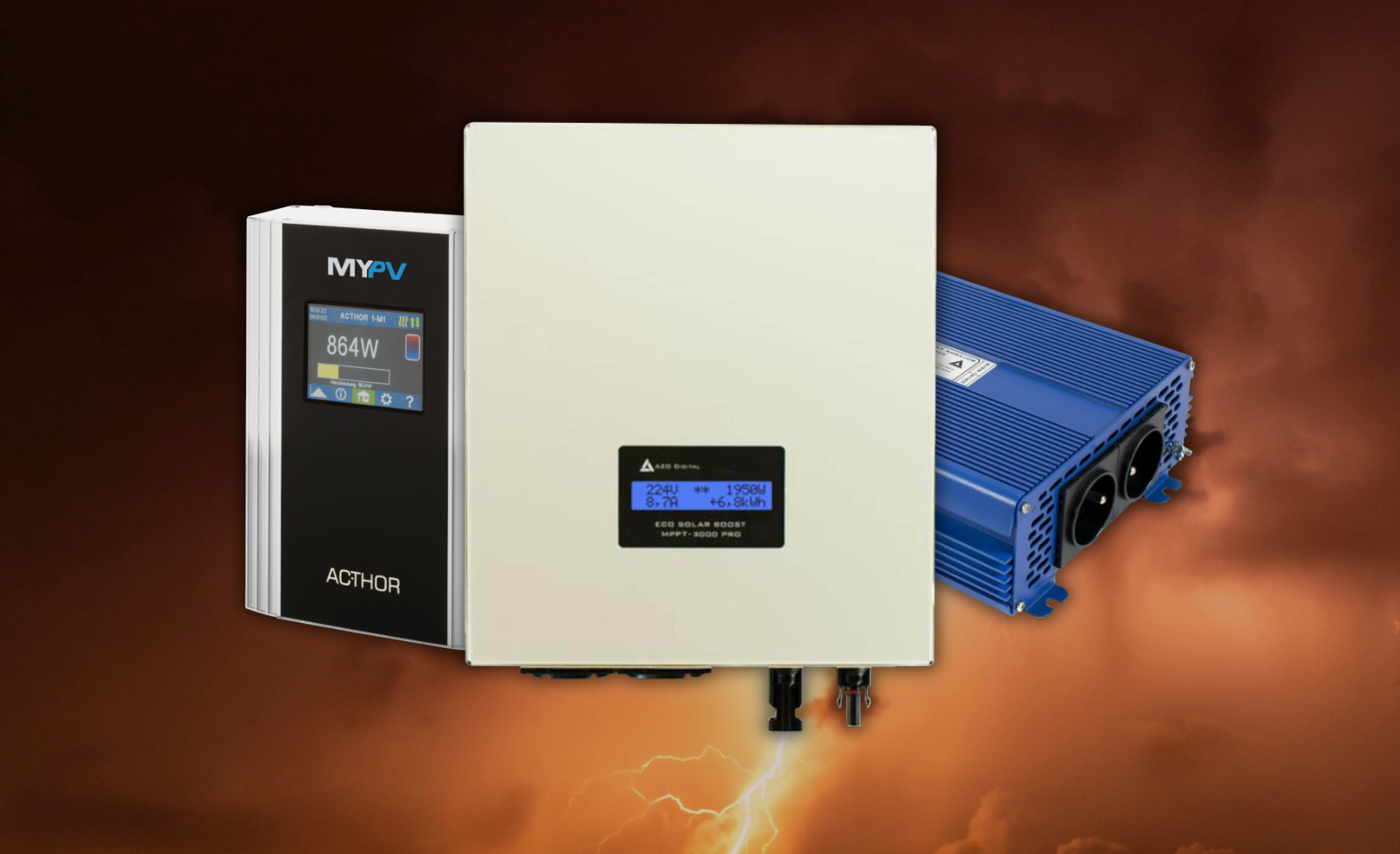3.06.2024
IV. PV2Heat - Off-grid inverters and solar heater control elements

This chapter will discuss PV2Heat control elements as well as modified sine off-grid inverters. These devices share a common operating principle: unlike PV2Heat heating elements and boilers, they do not do the heating themselves, but transfer the energy produced by the sun to a conventional heating element (depending on the manufacturer, this may be the manufacturer's recommendation or one of the more popular heating elements on the market).
The PV2Heat control element has a simple operating principle: using a built-in or stand-alone electricity meter (similarly to indirectly connected solar heating elements, the necessary information can also be obtained from a supported Smart Home system or battery charging unit in the case of a hybrid solar panel system), it is possible to transfer a certain amount of solar energy (or all the excess solar energy produced at the moment) to the electric heating element, obtaining the highest efficiency from an existing solar panel system.
In contrast, modified sine off-grid inverters convert the current produced by the solar panels into "alternating current" which can be further used to power simple electrical appliances. Unlike true sine inverters, modified sine inverters can only power simple electronics, without an inductive load. This means that the inverter will not be able to drive a circulator or a refrigerator, but can be used for simpler electronic equipment (including a conventional electric boiler).
The main advantage of indirect heating installations is the possibility to combine them with existing installations - for transmission installations this means combining with an existing solar panel system, and for modified sine wave inverters it means combining with an existing hot water boiler. The disadvantages include a slightly more complex installation process (which will often also involve mounting the individual unit on the wall of the utility room), as well as a limitation in the choice of equipment for some of the heating elements - some of the units will only be able to operate efficiently with heating elements from the same manufacturer.
It is worth noting that both types of control equipment can also be used to power other simple heating elements such as electrically heated floors or electric radiators.
Below are some product links where you can view these units:
- My-PV AC•THOR control device, which can be used to transmit a certain amount of solar energy (set or excess) via an electric meter to a connected heating element, in this case preferably a My-PV heating element. This control is also available in a 9 kW version (AC•THOR 9s) which can control several heating elements, a single 9 kW heating element or one of the supported manufacturers' electric heating systems such as electric floors, radiators or even heat pumps;
- ECO Solar Boost MPPT-3000 PRO 3.5 kW inverter can be used to power simple electrical appliances and can be connected to solar panels up to 3.5 kW. Please note that appliances with electrical regulation (e.g. hot water boilers) can only be connected to the main outlet (1).